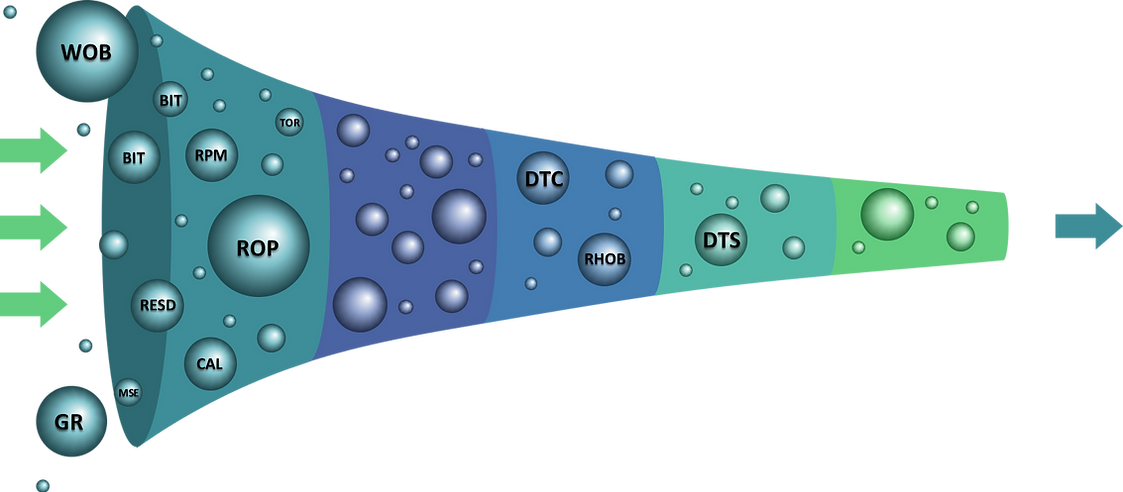
Safer and Lower Cost Well Logging
Formation evaluation logs in real-time or post-drilling, without the operational risks and at a significantly lower cost.

Data Driven Well Logging
QLog provides a suite of synthetic logs including shear, compressional, density and neutron. As a post-drilling or real-time service, this solution can help reduce the operational hazards of logging and eliminates the need for nuclear or acoustic tools in the borehole. With QLog, logging becomes a more cost effective and safer process.

Safer and Lower Cost Logging with Machine Learning
QLog provides a suite of synthetic logs including compressional and shear sonics, density, and neutron. QLog can be run for vertical, deviated or horizontal wells. Qualification tests with supermajors have shown QLog to provide the same accuracy as LWD tools in both deep-water and onshore wells. Additional benefits to the oil company include no nuclear or acoustic sources in the well; and savings up to 80% of conventional logging costs.

Lower Cost
QLog can deliver results within the same accuracy of LWD tools for a fraction of traditional methods.
No boots on the Ground
QLog can be run as SaaS solution or from our offices in Houston, TX with no need for personnel in the field.
Data Driven
The data driven approach
employed by QLog allows for real-time near bit rock property predictions.
No Nuclear Sources
Since QLog's predictive power comes from a state-of-the-art neural network, we can record complete logs without having to send a single nuclear source downhole.
Drilling Data goes in, Rock Properties Come out
QLog is based on the simple principle that a fundamental physical relationship exists between drilling (EDR) data and the formation's elastic properties. Our approach, leverages neural network technology to uncover this relationship and derive triple-combo FE-logs from input EDR data. Key aspects of QLog have been awarded patent protection. This reinforces the growing importance of applying artificial intelligence to extract valuable rock properties information from the drilling data – and Quantico’s technology leadership in this area.

QLog Funnel
Conditioned drilling data is used as an input to a trained neural network. The results are high resolution formation properties.
© Quantico Energy Solutions 2020
